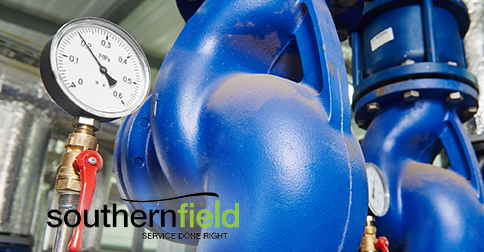One of a plant operator’s missions is to continually look for ways to boost efficiency, by either optimizing processes or turning to advanced technology.
Each component in a power plant can be optimized or upgraded in some way. This especially goes for vital but overlooked pieces like the air preheater system.
Air preheaters are heat exchange and recovery systems that use flue gas and other inputs to heat incoming fluid to a boiler so that the boiler doesn’t have to work as hard to reach target temperatures. This results in fuel efficiency that improves a plant’s overall performance and ROI, to the tune of 10 percent or so thermal efficiency gains.
It’s not enough to just have an air preheater system (although they’re virtually mandatory if you want maximum performance). You need to find ways to upgrade these components.
Why Optimized Air Preheaters Matter
The potential cost of not having a fully-optimized air preheater can be significant.
Case in point: if the gas exit temperature in a system changes by just 10 degrees Fahrenheit, that can reduce the overall efficiency of your plant’s boiler by approximately 0.25 percent. That may not seem like a lot on the surface, but any plant manager knows that even a quarter-point decrease can cost anywhere from tens to hundreds of thousands of dollars in increased fuel cost each year.
A big problem with having an air preheater, though, is the fact that they’re often overlooked. A plant will install a system and then leave it alone to work without regularly inspecting and maintaining it. This is a problem because the numbers are assuming the preheater is working at 100 percent efficiency, when that may not actually be the case.
One major reason this happens is a common culprit in any air-based system: leakage.
Reducing Air Leakage through Timely Upgrades
The main factor behind why an air preheater system doesn’t perform as well is air leakage. Leakage happens through expansion joints, penthouses, and casings that are either warped, corroded, improperly installed, or improperly fitted. When this occurs, the seals in the system that keep air in are degraded.
One preferred method to fix leakage is to replace the boiler’s gas seals with models that are designed with modern technology. These newer models come in two variants:
- Full contact radial seals
- Self-reinforcing circumferential seals
The first type – radial seals – can reduce leakage by up to 50 percent in many cases and are a significant upgrade over the type of radial seals that are found in air preheaters throughout the industry. Full contact seals are designed to be flexible enough to maintain total, continuous contact with the sealing plate, even if the sealing surfaces have fallen victim to warping or distortion.
The second type – self-reinforcing circumferential seals – reduce leakage by being able to be closer to the rotor sealing surface. Older versions couldn’t do this because that close of a proximity to the sealing surface would inevitably damage the seal due to contact. To compensate, designers had to move the seal further away – which decreased the potential for contact damage but increased the amount of leakage.
In both cases, modern technology can reduce leakage while improving efficiency in an air preheater. Reducing leakage reduces power requirements, which ultimately cuts down on the amount of fuel that must be consumed each year by a boiler unit.
Simply put, maintenance and upgrades to your air preheater system can keep efficiency high and save fuel costs by tens to hundreds of thousands of dollars per year.


